Are you ready to dive into the depths of circular saws and discover just how deep they can cut? Prepare yourself for a whirlwind adventure as we unravel the mysteries of these powerful tools. From woodworking enthusiasts to construction professionals, the circular saw has become a staple in the world of cutting. But have you ever wondered just how far this tool can go? Get ready to be amazed by the precision and power that lies within this remarkable creation. So, sit back, hold on tight, and let’s journey into the unknown depths of a circular saw’s capabilities!
Different Types of Circular Saw Blades
Standard Blades
Standard blades are the most common type of saw blade available. They are usually made from high-carbon steel and have a variety of tooth configurations depending on the type of cut needed. Standard blades can be used for both ripping and crosscutting wood, as well as making miter cuts in plastic laminate or aluminum. The standard blade has a cutting depth ranging around 1-1/2 to 1-3/4 inches.
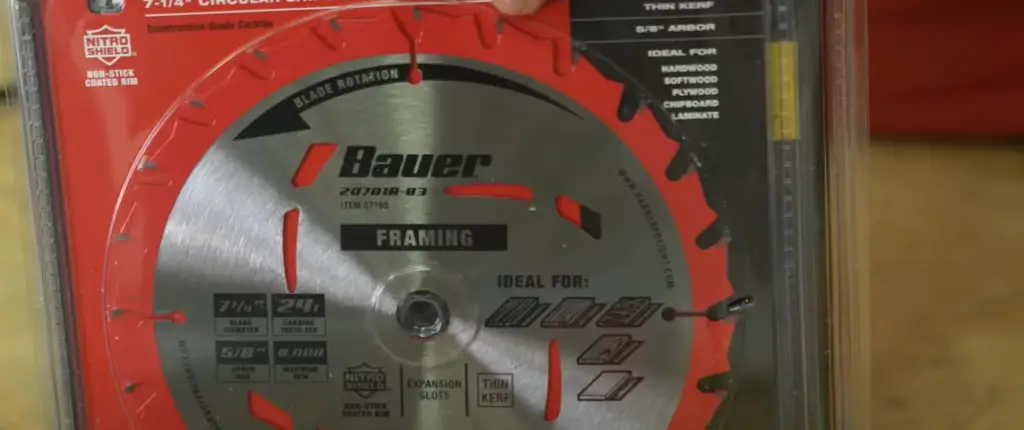
Dado Blades
A dado blade is a highly specialized type of circular saw blade specifically designed for creating precise grooves in woodworking projects. It features multiple teeth, usually carbide-tipped, strategically arranged to efficiently remove material and create clean, uniform dadoes and rabbets in plywood, particle board, and various other types of sheet goods. With a typical cutting depth ranging from 3/4 to 1-1/2 inches, dado blades offer versatility and precision for achieving professional-grade results in woodworking applications.
Combination Blades
Combination blades are designed for making both clean crosscuts and rip cuts in wood. The teeth on the blade are arranged in alternating configurations which allow it to perform both types of cuts more efficiently. The combination blade has a cutting depth ranging around 2-1/2 to 3 inches.
Carbide-Tipped Blades
Carbide-tipped blades are specifically engineered for making precise miter cuts in hardwoods and other challenging materials. With their exceptional durability and longevity, these blades feature a special carbide tip that outperforms traditional steel blades, ensuring consistent and accurate cuts even when tackling dense wood or plastic laminate. Moreover, the carbide-tipped blade boasts a generous cutting depth ranging from 1-3/4 to 2 inches, providing versatility for various woodworking applications.
Laminate Trim Blades
For making flush cuts in plastic laminate and other delicate materials, you’ll need a special trim blade. This type of saw blade has very few teeth (usually just 4 or 6) that are extremely sharp and carefully arranged to minimize chipping or splintering of the material. The laminate trim blade has a cutting depth ranging from 1/2 to 3/4 inch, so it’s perfect for creating precise and clean cuts in laminates, particle boards, veneer plywood, and other delicate materials.
Abrasive Blades
Abrasive blades are designed for making aggressive cuts in concrete, brick, stone, and other masonry materials. These blades feature abrasive particles bonded to the cutting edge which allow it to easily rip through hard surfaces without slowing down or dulling quickly. Abrasive blades typically have a cutting depth ranging from 1/4 inch up to 2 inches depending on the material and blade size [1].
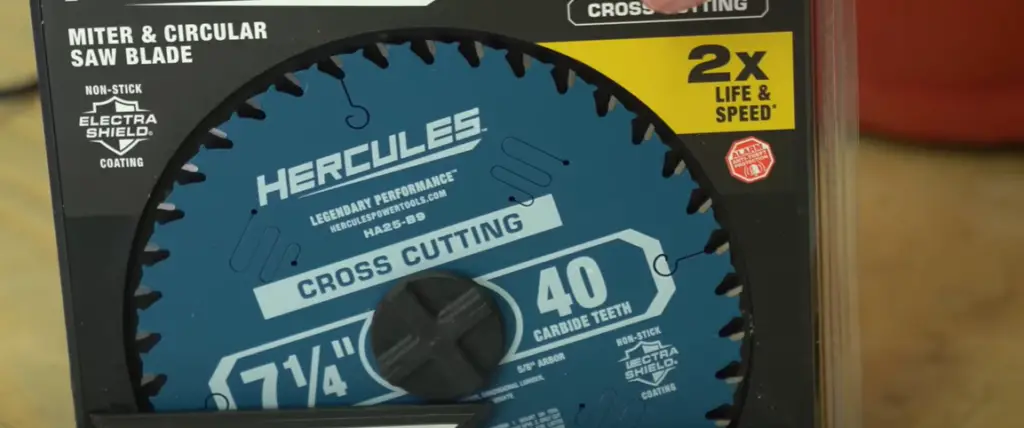
How to Choose the Right Blade?
Size and Teeth
When looking to buy a circular saw blade, the two main factors in determining the right one for your job are size and number of teeth.
The diameter of the arbor hole on your saw should match the diameter of the blade you are considering purchasing; otherwise, it won’t fit properly. Different sizes of blades can require different arbor sizes. In addition to the size, you should also consider the number of teeth on a blade.
The more teeth a blade has, the smoother and more accurate your cut will be; however, you may sacrifice some speed for accuracy if you opt for a higher tooth count. Conversely, blades with fewer teeth tend to perform faster but can leave rough edges. Therefore, it is important to look for a balance of the two.
Blade Depth
A blade’s depth can be as important as its size and number of teeth when it comes to determining the right one for your job. A shallow depth blade may make it difficult to cut through thicker material while a deeper depth blade will have more cutting surface to work with.
It is important to understand the project you are working on and what type of material you will be cutting in order to know how deep a blade must be. If your project requires more precise cuts or if the material is particularly thick, a deeper blade may be necessary.
Wet or Dry Cutting
Another factor to consider when choosing a circular saw blade is whether you are going to use it for wet or dry cutting. Wet blades are designed to cut through material while submerged in water, while dry blades are meant for standard cutting.
Wet cutting can be useful if the material you’re working with tends to heat up and warp quickly; the water will help dissipate the heat and keep the material from warping. Dry blades, on the other hand, tend to have more teeth and are suitable for clean, precise cuts in a variety of materials.
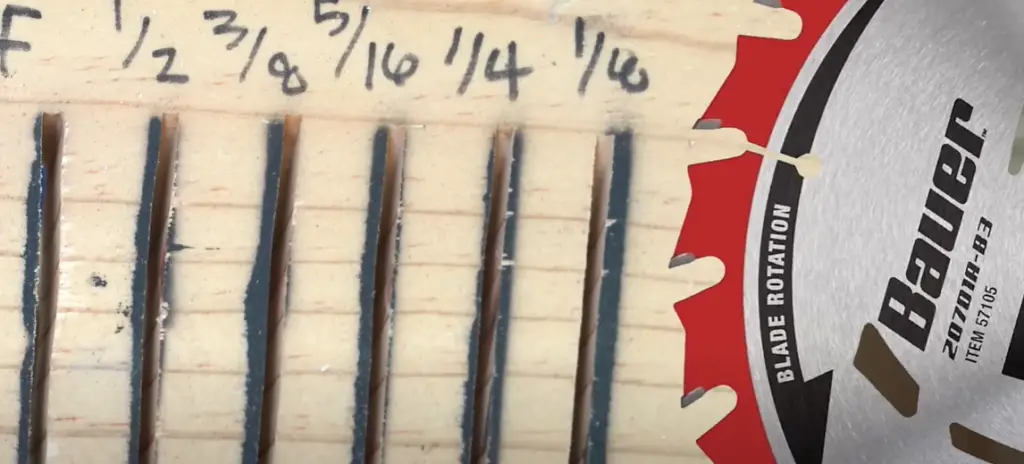
Hook Angle and Kerf Number
The hook angle and kerf number are also important factors to consider when selecting a blade. The hook angle refers to the angle of attack, or how aggressive the cut is going to be. A higher hook angle will provide a faster, more aggressive cut while a lower hook angle will be slower but more precise.
By considering these factors carefully before purchasing your saw blade, you will be sure to choose the right one for your project. With the right tool in hand, you can make quick work of any job [2].
What Can You Cut With a Circular Saw?
Step #1 Know About The Blades
Circular saws are incredibly versatile tools that excel at cutting through a wide range of materials including wood, metal, and plastic. With the right blade, these powerhouses can tackle a variety of tasks with ease.
To fully grasp the capabilities of your circular saw, it’s essential to understand the various types of blades available and their specific cutting capabilities. Blades are designed for different materials and can handle varying depths of cut, ensuring precision and efficiency in your projects. Whether you’re working with delicate woodwork or heavy-duty metal fabrication, there’s a blade to suit your needs and achieve the desired results. So, with a circular saw in hand and the right blade at your disposal, you’ll be empowered to take on any cutting challenge with confidence and precision.
Step #2 Understand How Deep The Saw Cuts
The depth of cut depends on the type and size of the blade, so it’s important to check which one is compatible with your saw and what material it can be used for. Generally speaking, most circular saw blades range from 1/8” to 3/4” in depth.
A standard 10-inch blade will only reach a depth of about 3/4” and may require multiple passes for deeper cuts. Larger blades, such as 12-inch or 14-inch blades, will reach a maximum depth of up to 1-1/2”.
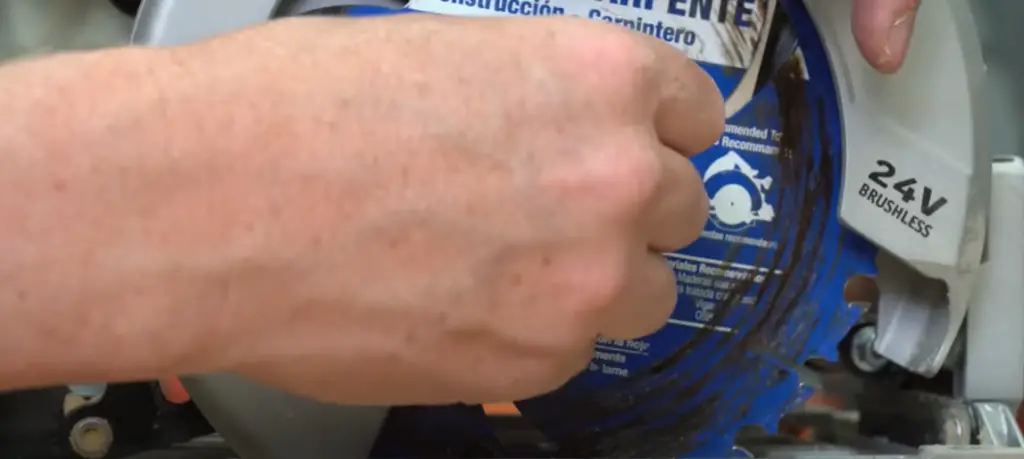
Step #3 Choose The Right Blade For Your Project
The type of blade you use also matters, so it’s important to select the right one for your project. A general-purpose blade is suitable for most applications, while an aluminum cut-off blade is designed specifically for cutting through metal.
Circular saw blades are made from different materials such as steel, carbide, and diamond. Steel is the most common option and will work fine for softer materials like wood and plastic. Carbide blades are tougher and can be used for cutting metal, while diamond blades are ideal for cutting through stone or concrete.
Step #4 Adjust Depth To Your Needs
Most circular saws are equipped with an adjustable depth-of-cut lever, which provides you with the flexibility to fine-tune the blade’s cutting depth. By setting the depth of the blade accurately, you can ensure precise and consistent cuts in your woodworking projects. For instance, when working with a piece of 1/4″ plywood, it is recommended to set the depth of the blade to match the thickness of the material, in this case, 1/4″. This attention to detail ensures optimal performance and helps achieve the desired results in your woodworking endeavors.
How Deep Can a Circular Saw Cut?
7 ¼″ Saw: How Deep Can a 7 ¼ Inch Circular Saw Cut?
A 7 ¼ inch circular saw can cut through material up to two inches thick and is ideal for making cuts in plywood, particle board, and other sheet goods. This type of saw also works well in a variety of woodworking projects such as crosscuts, bevels, dadoes, rabbets and more. There are several types of blades available that can help with precision and accuracy. By choosing the right blade for the job, you can make sure that your 7 ¼ inch saw cuts cleanly and accurately.
6 ½″ Saw: How Thick Can a 6 1/2 Circular Saw Cut?
A 6 1/2 inch circular saw is capable of cutting through material up to 1-3/4 inches thick. This type of saw is perfect for making straight cuts in softer woods such as pine, maple, and birch. It can also make crosscuts and bevels on a variety of materials including hardwoods, particle board, and sheet goods.
8 ¼″ Circular Saw: How Thick Can an 8¼ Inch Circular Saw Cut?
An 8 ¼ inch circular saw can cut through material up to 2-1/2 inches thick. This type of saw is ideal for making rip cuts in softwoods and crosscuts and bevels on a variety of materials including hardwoods, plywood, particle board, and sheet goods. There are several types of blades available that can help with precision and accuracy. By choosing the right blade for the job, you can make sure that your 8 ¼ inch saw cuts cleanly and accurately.
5 ½″ Saw: How Deep Can a 5 1/2 Circular Saw Cut?
A 5 1/2 inch circular saw is perfect for making crosscuts in softwoods and other sheet goods. It can cut through material up to 1-1/4 inches thick. This type of saw is also ideal for woodworking projects such as dadoes, rabbets, and bevels on a variety of materials including hardwoods, plywood, particle board, and sheet goods. By choosing the right blade for the job, you can make sure that your 5 ½ inch saw cuts cleanly and accurately. Additionally, many circular saw models come with a fence or guide that helps keep your cut straight and true [3].
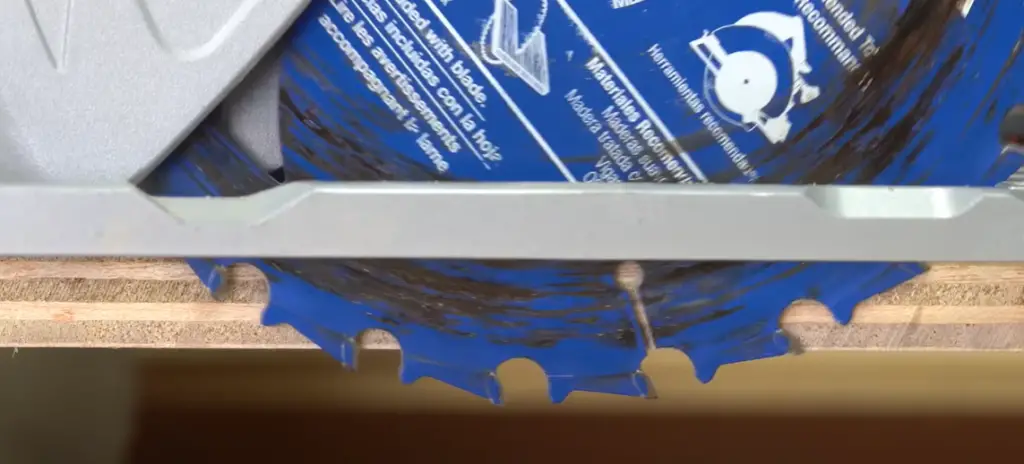
Circular Saw Depth Adjustment
When using a circular saw, it is important to know how to adjust the depth of the blade. To do this, you must first remove the guard from the saw. Once the guard is removed, there will be an adjustment lever on one side of the saw body. Move this lever forward or backward to adjust the depth of the blade in relation to your workpiece.
Once the desired depth of cut has been achieved, it is important to check that the saw blade is securely tightened into place. This will help ensure a safe and successful cutting experience. To test this, try to wiggle the blade back and forth while holding onto the saw body. If you feel any movement, simply tighten up the screws on either side of the blade to ensure a tight fit.
Finally, it is important to reattach the saw guard once you have finished adjusting the depth of your cut. This will help keep your hands and fingers protected from the spinning saw blade while in use.
Remember that circular saws can be dangerous if not used with caution, so always take the time to adjust the depth of the blade correctly before beginning a cutting job. This will ensure that you have a safe and successful experience using your circular saw.
What Is The Largest Circular Saw Size?
Circular saws are essential tools for any woodworking project. Whether it is a basic DIY task or a large-scale professional job, having the right size circular saw can make all the difference when it comes to accuracy and precision. The largest circular saw sizes vary depending on the type of blade you use.
Generally speaking, the largest depth available in most commercial blades is about 2-1/2 inches. This size can be used for a variety of tasks, including crosscuts, dados, and rabbets. However, if you need to make deeper cuts for your project, there are specialty blades available that can reach depths up to 4-3/4 inches. With these advanced models, you can easily cut through thicker materials such as hardwoods and dense plywood.
Be sure to always use the right safety gear when working with circular saws and other power tools. Taking the time to protect yourself will help ensure that you remain safe throughout your project. With the correct blade and a few safety precautions, you can easily make deep cuts and accomplish any task quickly and accurately.
Safety Considerations When Using a Circular Saw
A circular saw is a very powerful tool and should be used with caution. It is important to keep in mind several safety considerations when using a circular saw.
First, make sure you wear the proper personal protective equipment (PPE). This includes face protection, such as safety glasses or a full-face shield; head protection, such as hard hats; hearing protection, such as ear plugs or muffs; and hand protection, such as gloves.
Next, make sure the saw blade is the correct size for the job. A circular saw’s depth of cut is determined by the diameter of its blade. Using a blade that is too small will not provide an adequate depth of cut, while using a blade that is too large can cause kickback and other safety hazards.
Finally, make sure to use the proper technique and follow all manufacturer instructions when using a circular saw. This includes securing the material being cut before starting; ensuring that the blade is aligned properly with the cut line; keeping hands away from the cutting area; never forcing the saw or putting too much pressure on it; and always disconnecting the power before making any adjustments or repairs.
These simple safety considerations will help ensure that you get the most out of your circular saw while avoiding potential danger. Additionally, it is important to inspect your equipment regularly for signs of wear or damage, as this can affect its performance and create further hazards. With regular maintenance and proper use, a circular saw can provide years of service. Taking the time to follow these simple safety tips will help make sure that your experience with a circular saw is both safe and successful.
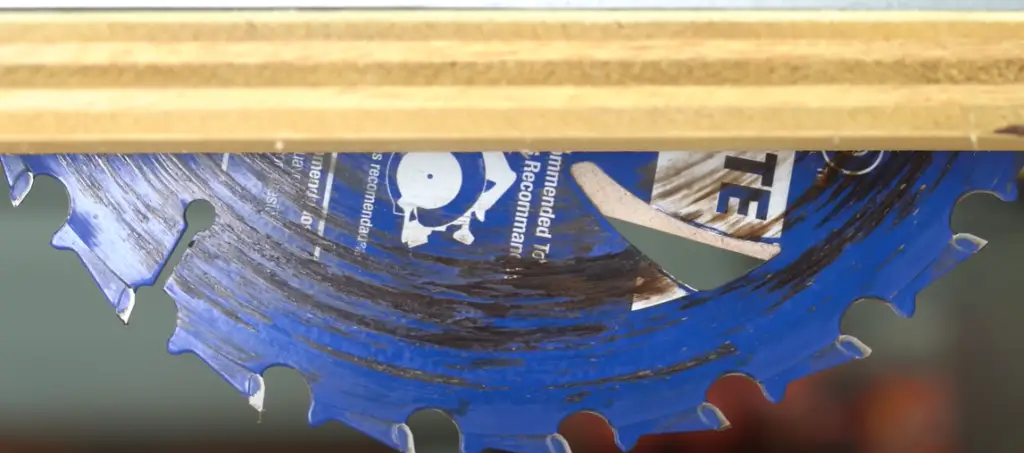
FAQ
What is the maximum cut depth of a circular saw?
The maximum cut depth of a circular saw depends on the size and quality of the blade. Generally, blades range from ¾ inch to 1 ½ inches in length. However, some brands offer special blades that have deeper cuts up to 2 inches or more. It’s important to note that longer blades will require extra power and may require special tools for proper operation. Additionally, some models of circular saws can offer a deeper cut with an optional blade or adapter. Always make sure to check the manufacturer’s instructions and warnings before attempting to use any special cutting tools.
What is the difference between a circular saw and a miter saw?
A circular saw is designed for making straight cuts, whereas a miter saw is designed for making angled cuts. A circular saw can be used to make precise straight cuts and is often the preferred tool for cutting lumber or sheet goods in a shop or on a job site. Miter saws are designed specifically for making angled cuts, such as mitered corners and trim work. They feature adjustable blades that can be used to accurately cut angles up to 45 degrees left or right. Miter saws are commonly used for cutting crown molding, picture frames, and other projects that require precise angled cuts.
Is a circular saw safe to use?
Circular saws can be dangerous if not used properly, so it is important to follow the manufacturer’s safety instructions and wear appropriate safety gear while operating the saw. Make sure to read and understand the owner’s manual before using a circular saw so that you are familiar with the operations of the saw, as well as any safety instructions. Additionally, always wear eye protection when operating a circular saw and keep your hands away from the blade at all times. Finally, take care to use only blades that are designed for use with your particular saw, and ensure that they are correctly installed. With proper caution and attention to detail, a circular saw can be a safe and reliable tool for any home workshop.
What type of blade should I use with my circular saw?
The type of blade you should use with your circular saw depends on the material you’re cutting. Generally, blades made from carbide-tipped steel are the most durable and last the longest. These blades can be used to cut through a variety of wood types as well as other soft materials such as aluminum and plastic. If you’re cutting hard materials like concrete or stone, diamond-tipped blades are recommended. Be sure to check your saw’s instructions before changing blades, as the process may vary depending on the saw model.
Useful Video: I Unlocked The PERFECT Circular Saw Blade Depth
Conclusion Paragraph
Circular saws can have different cut depths depending on the size of the blade and the power of the motor. Utilizing the correct blade for your saw can enhance precision and accuracy in your projects. Furthermore, it is important to consult with a professional if you are inexperienced in utilizing circular saws. With proper knowledge and understanding, you can easily get the desired depths out of your circular saw without any risk of harm.
References:
- https://toolstoday.com/g-44-circular-saw-and-blades-a-basic-overview
- https://jettools.com/blog/how-to-choose-the-right-saw-blade
- https://www.finepowertools.com/saws/circular-saw-depth/















Leave a Reply